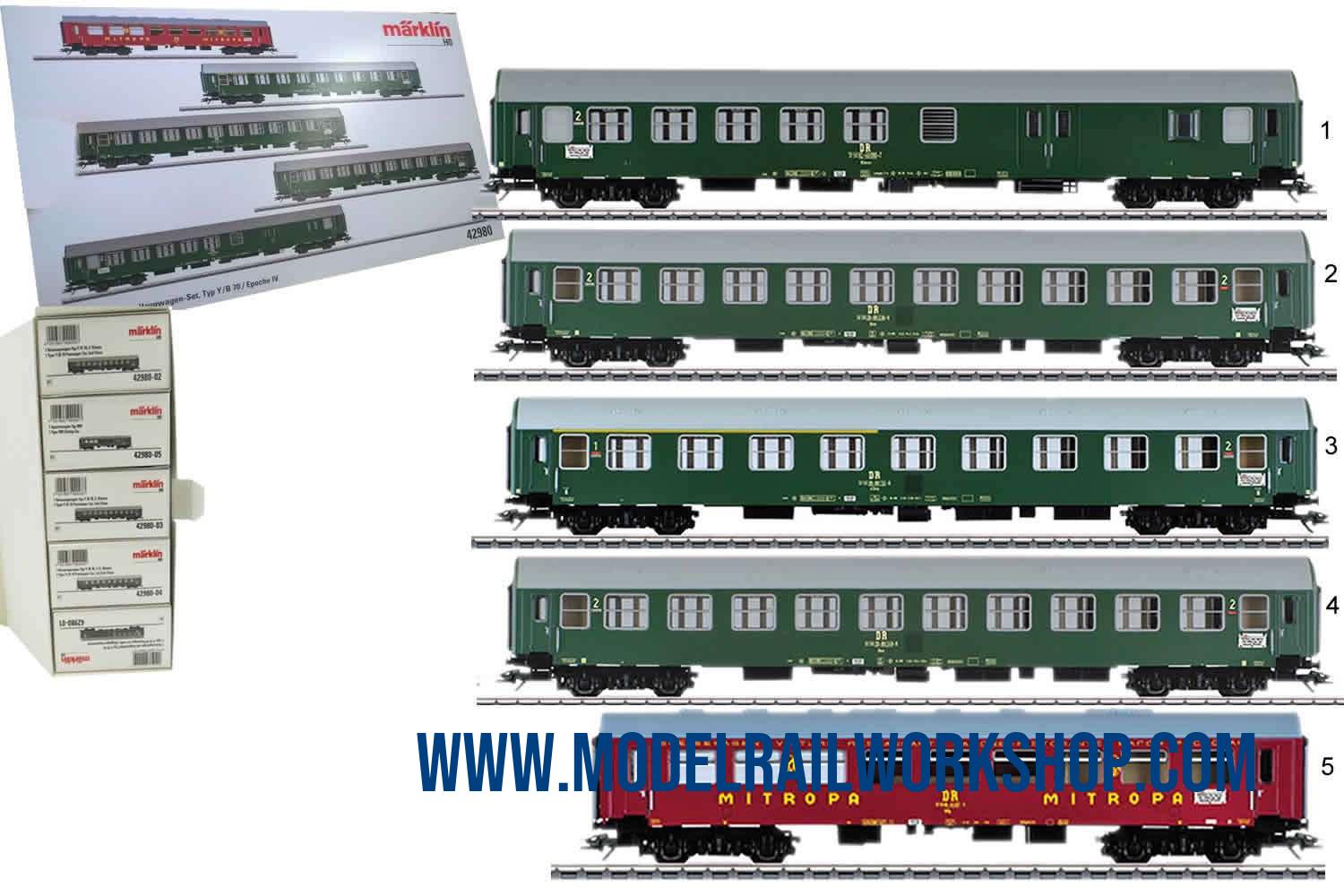
| KEY DATA | |
|---|---|
| Product Name | 42980 Passenger car set with five cars - 1st/2nd cl- DR (GDR) |
| Object type | Car-Passenger |
| Product Line | Märklin Special Model |
| Era | 1970-1990 (IV) |
| Manufactured years | 2016-2017 |
| Type of housing | Synthetic |
| Length | 134.8 cm - 28.0 cm |
| Technology | - |
| Railway company | DE-Deutsche Reichsbahn DDR 1949-1993 |
| Koll valuation (Year) | 190€ (2022) |
| Url to Märklin | Klick to GoTo www.maerklin.de |
| No | Obj.No | Obj.txt | Category | Description |
|---|---|---|---|---|
| 42980-1 | 51 50 82-40 006-7 | DR Hamburg - Dresden | BDmse | Luggage car/passenger car - 2nd cl - Green - 28.0 cm |
| 42980-2 | 51 50 20-80 236-6 | DR Hamburg - Dresden | Bme | Passenger car - 2nd cl - green - 28.0 cm |
| 42980-3 | 51 50 20-80 249-9 | DR Hamburg - Dresden | Bme | Passenger car - 2nd cl - green - 28.0 cm |
| 42980-4 | 51 50 39-80 132-6 | DR Hamburg - Dresden | ABme | Passenger car - 1st/2nd cl - green - 28.0 cm |
| 42980-5 | 51 50 88-45 017-3 | DR MITROPA | WRg | Restaurant car - red |
| Description | |
|---|---|